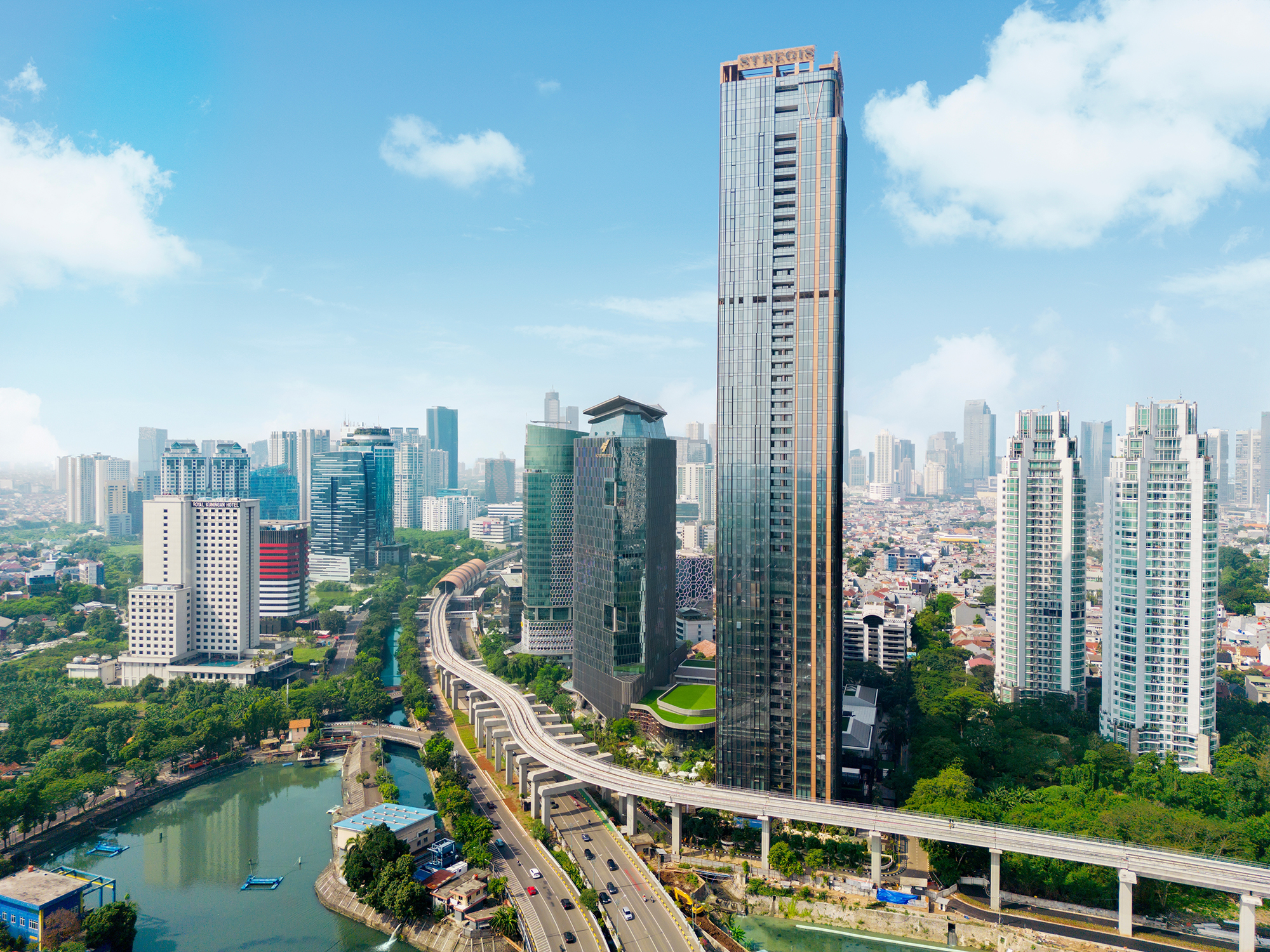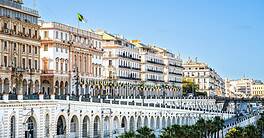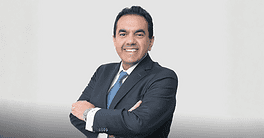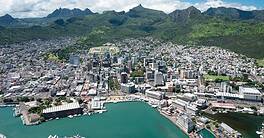Indonesia is attracting foreign investors with its growing middle class, young demographics, and abundant resources.
The newly-admitted member of the BRICS bloc of developing economies presents companies with a stable alternative to China, low tariffs to the 677 million people of the Association of Southeast Asian Nations (ASEAN) and a 25-year history of democratic transition.
At the Asia-Pacific Economic Cooperation summit in Peru last November, Indonesia’s new President Prabowo Subianto, who began his term in October, emphasized that foreign investments would be protected by a solid legal framework, and highlighted incentives and a commitment to liberalizing ownership laws.
Several global financial institutions—including the World Bank, the International Monetary Fund (IMF), and the Asian Development Bank—estimate that Indonesia’s economy will grow within the range of 5% to 5.1% in 2025.
| Vital Statistics |
|---|
| Location: Southeast Asia |
| Neighbors: Singapore, Malaysia, Vietnam, Brunei Darussalam, the Philippines, Papua New Guinea, East Timor, Australia |
| Capital city: Jakarta (on Java); new capital, Nusantara (on Borneo) under construction |
| Population: (2024): 283.4 million |
| Official language: Bahasa Indonesia |
| Others: more than 700 languages including English, Dutch, local dialects (of which Javanese is most widely spoken). |
| GDP per capita (2024): $5,000 |
| GDP growth (2024): 5% |
| Inflation (2024): 2.5% |
| Currency: Indonesian rupiah |
| Investment promotion agency: BKPM |
| Investment incentives available: Tax holidays, tax allowances, exemptions of import duties for capital goods and raw materials; priority sectors eligible for further tax and other incentives, such as facilitated licensing and land use, waiving import duties; tax incentives include eliminating income tax on dividends earned in Indonesia and on certain income, including dividends earned abroad, if invested in Indonesia; special economic and trade zones |
| Corruption Perceptions Index rank (2023): 115/180 |
| Political risk: China encroachment (low risk); separatist group in Papua continues low-intensity conflict; military has strong political influence; territorial disputes with neighbors over various islands and fishing grounds |
| Security risk: Islamic terrorism presents minor risk; instances of maritime piracy in the Strait of Malacca; regular occurrence of violent incidents and threats against foreigners by militant groups in Papua; major transit point for illicit narcotics; armed robberies occur regularly; petty crime common; kidnapping; harassment of women traveling alone; reckless driving and poor road conditions |
| Pros |
| Democratic change, smooth elections |
| English widely spoken in main centers |
| Political commitment to ease investment and reduce bureaucracy |
| Trade treaties include ASEAN, RCEP, Indo Pacific Economic Framework, and OECD Inclusive Framework on Base Erosion and Profit Shifting |
| 27 bilateral investment agreements in force |
| All political parties stress foreign direct investment and growth |
| Strong relations with US and China |
| Cons |
| No bilateral investment treaty with US |
| Undeveloped infrastructure (though improving) |
| Nationalistic politics can create investment difficulty |
| Approval process complex (but getting simpler) |
| Regional ambitions of China |
| Corruption continues to hamper judiciary; graft investigations of senior judges and court staff |
| Sources: CIA World Factbook, Government of Canada Global Travel Advisory, IMF, Trading Economics, Transparency International, US State Department, PwC, UNCTAD, World Bank, World Population Review. For more information about Indonesia, click here to read Global Finance’s country report page. |
Traditionally dependent on hydrocarbons and minerals, Indonesia’s digital economy is now booming thanks to high internet penetration and a tech-savvy population. The country’s tropical climate and enormous geothermal resources also offer compelling opportunities for early investors in carbon-free energy.
Monopolies ‘Diminished’
Indonesia endured decades of miliary dictatorship following independence from Dutch colonists. And since the fall of strongman President Suharto’s regime in 1998, the country became a democracy. This was “unthinkable in the Suharto era,” Richard Borsuk, co-author of “Liem Sioe Liong’s Salim Group: The Business Pillar of Suharto’s Indonesia,” says.
“There’s also good fiscal management, a plus for investors,” he adds. “Overall business competition has increased and monopoly power has diminished.”
The downside? Investors used to Singapore’s “benign smoothness” should be patient with the long time it can take to get things done in Indonesia.
“The bureaucracy can be daunting,” Borsuk adds, also explaining that—in Indonesia, as in much of Asia—relationships are key. His solution? Choose partners carefully, and build connections with them.
Recent Election
Subianto campaigned by pledging “continuity” with the policies of his predecessor, Joko (Jokowi) Widodo. One of Subianto’s programs is to give children from poorer families good nutrition to help them grow up healthy. “This will be very expensive to provide nationwide, but Prabowo is going to push it hard,” Borsuk says.
Indonesia’s previous regime also initiated an ambitious and costly plan to move the capital from Jakarta to a new site on Borneo. It remains uncertain whether Prabowo will prioritize this project.
Shalini Kamal Sharma has been doing business in Indonesia since 2004. “Through our company Formula One Furniche, we supply customized [furniture, fixtures, and equipment] to hotels, resorts, and service apartments worldwide, with a strong focus on sustainability,” she explains. “Indonesia is a substantial and growing market for us.”
Indonesia’s hospitality real estate sector is currently $2.1 billion. It’ll get to $3.65 billion by 2030, with a compound annual growth rate exceeding 12%, analysts say.
Sharma points to the active role of Jakarta in encouraging inward investment. “The government—through BKPM [the Ministry of Investment’s investment coordinating board]—is highly responsive to the business community. We have been invited by BKPM to look at specific opportunities, which is a major change and very encouraging.”
BKPM is the primary agency that supports foreign investors and acts as a bridge between investors and the government. “They engage with foreign investors and, as we have learned, are quite proactive in assisting potential investors,” she says.
In a country once lambasted for its challenging bureaucracy, she points to major changes here too. “Getting products through customs has become far easier of late,” she notes.
A Country Of Superlatives
Joel Shen, a lawyer based in Jakarta and Singapore, who heads Withersworldwide’s technology practice in Asia, boasts that “Indonesia is a country of superlatives and is an attractive investment destination with a number of very clear advantages.”
Indonesia, notwithstanding a contraction in its middle class, “is expected to be the third-largest contributor to the global middle class over the next decade, after only India and China,” he says.
Besides being the largest economy in Southeast Asia, it’s the region’s only country in the G20, making it hard to ignore.
In 2023, Indonesia joined the Regional Comprehensive Economic Partnership, which includes all 10 ASEAN countries, plus Australia, China, Japan, New Zealand, and South Korea. “RCEP is the world’s largest free trade agreement (FTA), covering about 30% of global GDP and nearly one-third of the global population,” Shen says.
Indonesia also produces home-grown commodities: from palm oil, an ingredient in many fast-moving consumer goods (i.e., foods, cosmetics, soaps, and biofuels); to nickel, which is essential in the production of electric-vehicle batteries.
Coupled with its ongoing infrastructure development and reforms to improve business, “Indonesia presents numerous opportunities for investors,” Shen says.
The Digital Upside
Beyond demographics and natural resources, Indonesia’s economy is rapidly transforming digitally, fueled by mobile-first consumers, according to Shen.
Google, Temasek, and Bain & Company, in their 2024 e-Conomy Southeast Asia report, named Indonesia the fastest-growing large internet market.
“Investing in Indonesia has indeed become more accessible due to a combination of regulatory reforms and digitalization,” says Shen. The Omnibus Law on Job Creation, for example, simplifies business licensing, reduces restrictions on foreign ownership, and improves what had been onerous tax and labor regulations.
There’s also the Risk-Based Online Single Submission system, an online platform that makes it easier for low-risk foreign investors to incorporate Indonesian companies and obtain business licenses.
Tax holidays, tax allowances, and other benefits are also available to encourage investment in sectors and regions prioritized by the government.
Sectors To Consider
Top sectors include e-commerce, fintech, IT, infrastructure (i.e., ports, roads, and renewable energy), manufacturing, electronics, auto and consumer goods.
Apple, Amazon Web Services, and Microsoft are making significant investments in manufacturing, cloud, and AI infrastructure, totaling $7.7 billion, with commitments spanning up to 2036.
“And don’t forget that with a burgeoning and aging population, you need health care and hospitals, as well as tourism, hospitality, and related services, particularly in destinations like Bali and Labuan Bajo,” suggests Shen.
There is also a growing population. By 2045, the World Bank expects 317 million people. MNC Kapital Indonesia CEO Yudi Hamka projects that per capita GDP will grow to $22,000 by 2040.
“Our activities span digital to banking, and in a country where there is 80% internet penetration—mostly run by mobile—we see a huge digital upside,” Hamka says. “On the banking side, the sheer number of unbanked is huge.”
World Bank 2021 data shows Indonesia as the world’s fourth-largest country of unbanked adults, at 97.7 million. “Financial services,” Hamka predicts, “will become a huge area of growth.”
As for why investors should look seriously at Indonesia, Hamka suggests: “First, diversify your Asia presence. Second, access the ASEAN and South Asian markets. Third, supplement your China operations in an era of increased risk. And, lastly, leverage attractive FTAs including the world’s largest—the RCEP.”




